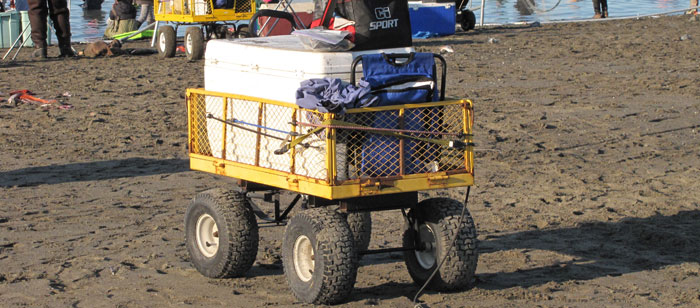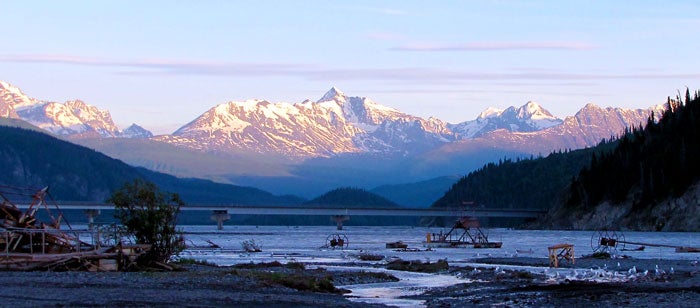Dipnetting in Alaska
Of all the many things that make Alaska unique, dipnetting has to be among the top ten. Available to Alaska residents only, the ability to wade into a river with a large net and scoop out an entire year's supply of fish is an unprecedented opportunity. Alaska's dipnetters are a unique breed, with a willingness to put up with cold water, bad weather, wind-driven waves, crowded beaches and many inconveniences for a chance to stock the freezer with one of the planet's most delicious, nutritious whole foods. Dipnetting is, for many, the highlight of the year, with a chance to camp on the beach with the family, relax around a beach fire, let the kids run, and catch enough fish to last the whole year.

Rigging Your Dipnet
Getting set up for dipnetting starts with deciding where you plan to dipnet. Nets for the Copper River can be completely different than a net you would use on the Kenai or the Kasilof. Do you plan to net exclusively out of a boat, or do you need a net that gives you the option of fishing from shore or a boat? Next, you need to look at your budget. Can you afford a couple hundred dollars for a premium setup, or will you need to build your own? Finally, a good working understanding of the different styles of hoops and rigging is necessary.

Gearing up for Dipnetting in Alaska
While dipnetting is not as expensive as rod-and-reel fishing, there are some basic items you need, in order to be effective. This page contains a list of the basic gear, and some add-ons that will make your trip to the river more pleasant and effective.

Alaska Dipnetting Techniques
If you go to any river in Alaska where dipnetting is allowed, you will notice right away that some dipnetters seem to catch a lot more fish than others, and some catch few, if any. There are several reasons for this. First, the characteristics of the river bottom and the current flow have a major impact on success rates. Fish tend to congregate in deeper holes or in back-eddies. This is particularly true of hooligan, and of king salmon. In fact, kings are often found in deeper water that dipnetters cannot usually reach. If your neighbor is out-fishing you six to one, there's a good chance he's found a depression in the riverbed that's holding fish. It doesn't need to be much of a depression, either. Just a couple of inches will break up the current enough to hold fish.

Dipnetting the Copper River: General Overview
The Copper River is a tremendous fishery in several ways. Although the size of the sockeye run is historically about 12% smaller than the the sockeye run on the Kenai, it presents many attributes that make that fishery, in the eyes of many Alaskans, the premium run in the state. To start with, participation in the Copper River dipnet fishery is much smaller than the Kenai dipnet fishery. Although the fishery has certain peak weekends, the fact that it lasts for most of the summer tends to thin participation out a bit. Next, the fact that the fishery is located a long distance from either Anchorage or Fairbanks, and it requires camping out in fairly rustic conditions, makes the Copper preferable to many who would rather spend a few days dipnetting at their leisure than to tackle the frenetic pace on the lower Kenai. And then there's the fish; Copper River reds are known around the world for better flavor and higher oil content than reds caught elsewhere. When it comes to table quality, Copper River reds are second to none.









